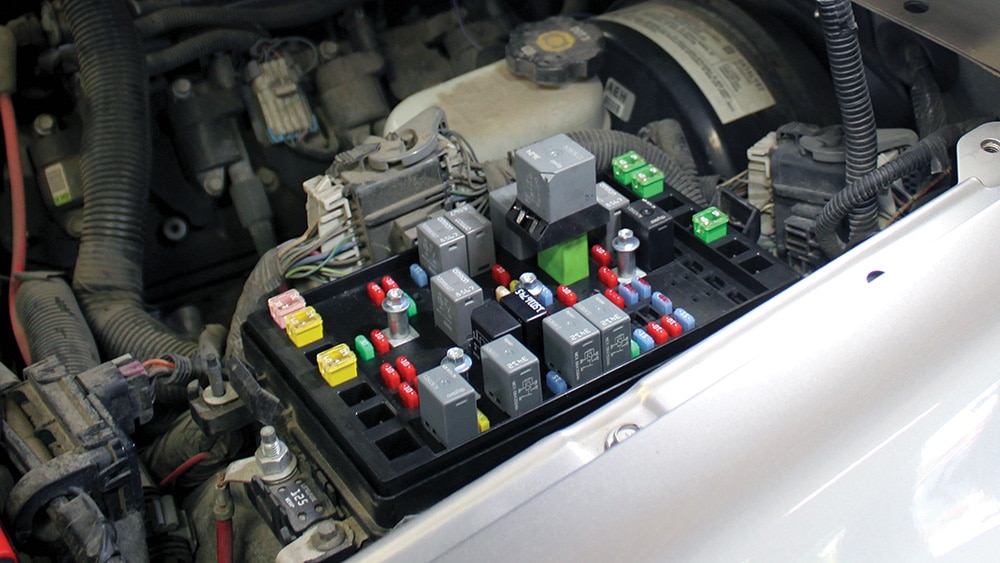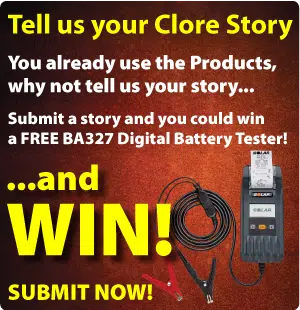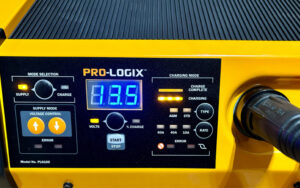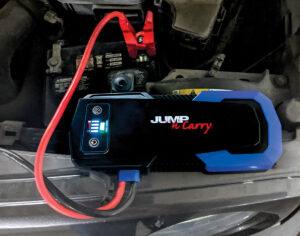At the risk of ruffling more feathers more than we did with our Favorite Movie Cars article, this month, we’re going to do a Deep Dive into proper vehicle connection procedures, with a focus on the negative lead. We expect to ruffle some feathers here because this topic has caused a stir in the past, whether on this blog, in the forums or in email exchanges. At the end of the day, this topic is really simple – assuming we’re dealing with a negative grounded vehicle (virtually all modern passenger vehicles), the negative lead from your battery charger or jump starter should always be connected to a proper chassis or engine ground. That’s it. Full stop.
Now, we’ll explain why. Assuming you follow the proper connection procedure (positive lead to battery positive post first, then negative lead to a good chassis or engine ground), you are completing the circuit with the negative lead. This can result in a spark as the negative lead gets close to completing said circuit. We (the equipment manufacturer, the vehicle manufacturer, the battery manufacturer and you) want any spark, if it occurs, to be as far away from the battery as possible. This is because batteries can expel explosive gases during normal charging and cranking situations, not to mention the excessive cranking that often happens when the vehicle doesn’t want to start (hence why you need to use a jump starter or charger on your vehicle). So, it makes sense that we’d (all of us) want any such spark to not take place where those gases could be present. Again, simple.

There’s another reason why you should always follow this connection method, if your safety isn’t reason enough. Current electrical systems are complex and use a wide variety of inputs in determining how much charging current to send to the vehicle’s battery at any given moment. These complex designs often deploy sensors in the positive cable from the alternator to the battery that monitor the amount of energy being provided to the battery. This assists in calculations related to battery State of Charge (SoC), battery State of Health (SoH) and more. If you connect to both vehicle battery posts while charging or jump starting, the vehicle can’t know how much energy has been provided to the battery. So, what the vehicle sees is that, when it was turned off, its SoC was at level X and, now, when it’s turned back on, the SoC is at level Y. And the vehicle’s computer has no idea why this change occurred. That’s confusing to the vehicle and confused vehicles usually begin to exhibit issues.
Why not do it right? The main reason people argue with us related to this topic is, “I’ve always done it this way – connecting to both battery posts – and never had any issues.” On a safety level, this is very faulty reasoning. Just because a suboptimal process hasn’t created a problem in the past doesn’t mean it won’t in the future. We never want to see our customers (or anyone else) get injured. One of the surest ways to avoid injury is to follow the best practice and connect the negative lead to a good ground. Another reason people follow a bad procedure is that it’s a hassle on some vehicles to find a good ground. This is totally true, but again, we’d argue your safety is well worth it. Also, this is only a hassle once per vehicle – after finding a good ground the first time on a new-to-you vehicle, you know where it is. From that point, it costs no extra time for all future connections.

As you might be able to tell, this is a topic we are very passionate about. Your safety means the world to us. That’s why we stress the need to wear eye protection, remove rings and jewelry, and avoid touching your skin and eyes when working around batteries. Vehicle batteries are very powerful. They should always be treated with respect and handled with care. That includes following the proper connection sequence and procedure when servicing them. .









3 Responses
Question. When attaching a Battery Tender to bring the battery back up to full power (while the battery is still hooked up in the vehicle) should the leads be hooked up the BOTH battery posts or should the negative lead be attached to a engine or chassis ground?
best practice is to attach the ground /negative /black clamp to a known good ground as far away from the battery as possible to avoid sparks near the battery. Battery explosions from hydrogen gas are a real deal . They explode violently into many pieces of shrapnel and acid is blown everywhere..been there done that. Need to avoid this risk at all costs. regardless of what you are connecting always use a grounded connection away from the battery
Rob – Thanks for your comment. We couldn’t agree more. Thanks, Jim from Clore Automotive